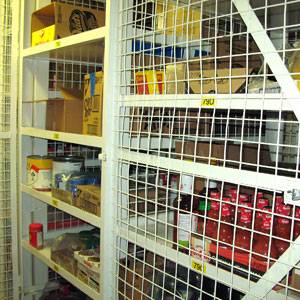Feeding a Crew, Without Want or Waste
By Luka Fössl, Canadian Coast Guard
May 16, 2016

Dry storage (Photo: Fisheries and Oceans Canada)

Cold storage (Photo: Fisheries and Oceans Canada)
When a Canadian Coast Guard ship such as the CCGS Pierre Radisson heads for the Arctic, it is for a long time. Managing food consumption on this voyage is a logistical feat. There must be enough food to last throughout unforeseen events while limiting food waste and unnecessary costs. This task belongs to the logistics officer, assisted by the storekeeper/clerk.
To plan well, some essential factors must be considered first:
- The length of the ship's mission.
- The number of people involved, including in transit.
- The specific needs of the chief cook and cook/steward.
- Each person's specific diet or food intolerances.
- The logistics officer uses a supply inventory computer program that analyzes data such as food reserves and the consumption statistics of previous missions. It is therefore possible to anticipate the quantity of supplies needed according to the number of people who will be on board.
The logistics officer must also factor in the capacity of the ship's stores and its budget. Contingencies, such as a deferred end of mission, must also be planned for. Carefully though: waste is to be avoided.
Replenishment in the Arctic is usually carried out every 42 days, by plane, during crew changes. Given transport costs and limited space, the weight and volume of foodstuffs are controlled. The priority is placed on fresh goods such as fruit, vegetables and dairy (except frozen milk). This leaves very little room for non-perishable products, which could be in short supply.
The logistics officer prepares and sends orders to various suppliers and then makes a loading plan that includes all other products needed for the voyage: paint, cleaning products, stationery, tableware, bedding, pharmaceuticals, and so on. Department heads then consult each other to avoid delivery schedule conflicts. Next, deckhands take charge of handling the goods received. Time must also be scheduled between orders to allow the storekeeper/clerk, assisted by the logistics staff, to verify the accuracy of received orders, stock them in the stores and compile the data in the computerized inventory system.
At this point, the ship is ready to head for the Arctic with sufficient required supplies and equipment. All that is left to do now is plan replenishment.





